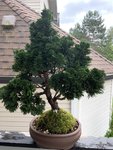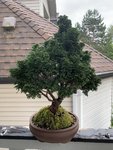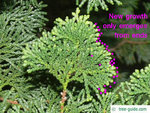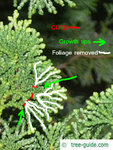cozmicat
Yamadori
Hey all,
I have this hinoki in my selection. I purchased as a bonsai in this current shape. I am not sure what to do with this. I like the pads that it has created, but I’d like to do more with it honestly. I am just not sure where to start. Any tips/ideas would be greatly appreciated. I live in the PNW zone 8a. I love the curve and detail on this trunk, so my obvious goal would be to accentuate that more. I know this tree is not as forgiving as some conifers in terms of no back budding or even no new growth of pruned back to far. So I am of course hesitant.
thanks all!
I have this hinoki in my selection. I purchased as a bonsai in this current shape. I am not sure what to do with this. I like the pads that it has created, but I’d like to do more with it honestly. I am just not sure where to start. Any tips/ideas would be greatly appreciated. I live in the PNW zone 8a. I love the curve and detail on this trunk, so my obvious goal would be to accentuate that more. I know this tree is not as forgiving as some conifers in terms of no back budding or even no new growth of pruned back to far. So I am of course hesitant.
thanks all!








